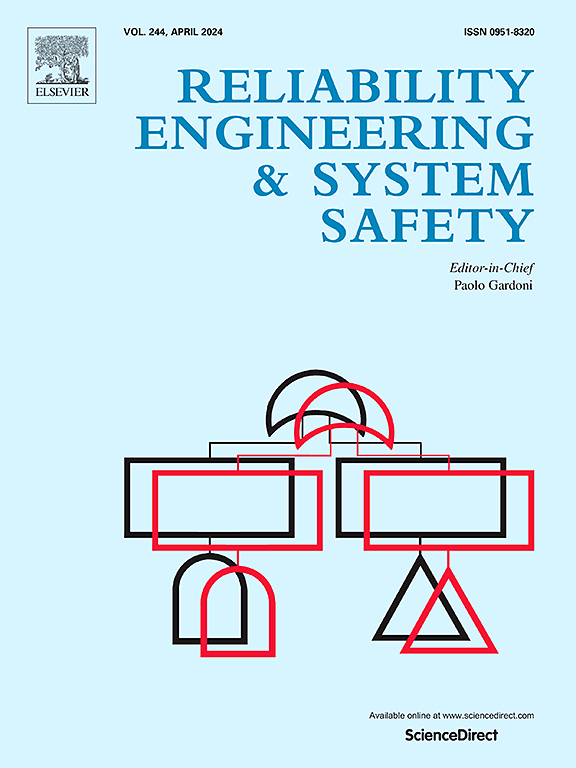Structural reliability analysis based on fractional moments-based iterative maximum entropy method and multiplicative exact dimension reduction integration method
IF 11
1区 工程技术
Q1 ENGINEERING, INDUSTRIAL
引用次数: 0
Abstract
The fractional moments-based maximum entropy method (FM-MEM) is a powerful method for constructing probability density functions and is widely applied in structural reliability analysis. To ensure the satisfactory performance of this method, it is crucial to determine an appropriate number of constrained fractional moments and estimate them with a balance between accuracy and efficiency. In response to these issues, this paper proposes a fractional moments-based iterative maximum entropy method (FM-IMEM) and a multiplicative exact dimension reduction integration method (M-EDRIM). In the FM-IMEM, a nonlinear transformation is performed to allow negative limit state functions (LSFs), and the optimal number and order of constrained fractional moments and Lagrange multipliers are determined efficiently through an iterative algorithm. Moreover, to estimate fractional moments in the FM-IMEM accurately and efficiently, the M-EDRIM is developed based on a new dimension reduction model, the multiplicative exact dimension reduction model (M-EDRM). This new model can decompose the LSF into a product form of lower-dimensional component functions exactly, thereby alleviating the curse of dimensionality in fractional moments estimation while ensuring accuracy. Five examples with various LSFs are investigated to validate the proposed method. Results show that the proposed method can well balance accuracy and efficiency for structural reliability analysis.
基于分数阶矩迭代最大熵法和乘法精确降维积分法的结构可靠性分析
基于分数阶矩的最大熵法(FM-MEM)是一种构造概率密度函数的有效方法,在结构可靠性分析中得到了广泛的应用。为了保证该方法的良好性能,确定适当数量的约束分数矩并在精度和效率之间取得平衡至关重要。针对这些问题,本文提出了基于分数阶矩的迭代最大熵法(FM-IMEM)和乘法精确降维积分法(M-EDRIM)。在FM-IMEM中,通过非线性变换允许负极限状态函数,并通过迭代算法有效地确定约束分数阶矩和拉格朗日乘子的最优个数和阶数。此外,为了准确有效地估计FM-IMEM中的分数阶矩,M-EDRIM基于一种新的降维模型,即乘法精确降维模型(M-EDRM)。该模型可以将LSF精确分解为低维分量函数的乘积形式,从而在保证精度的同时减轻了分数阶矩估计的维数困扰。通过5个不同lsf的算例验证了该方法的有效性。结果表明,该方法能够很好地平衡结构可靠度分析的精度和效率。
本文章由计算机程序翻译,如有差异,请以英文原文为准。
求助全文
约1分钟内获得全文
求助全文
来源期刊

Reliability Engineering & System Safety
管理科学-工程:工业
CiteScore
15.20
自引率
39.50%
发文量
621
审稿时长
67 days
期刊介绍:
Elsevier publishes Reliability Engineering & System Safety in association with the European Safety and Reliability Association and the Safety Engineering and Risk Analysis Division. The international journal is devoted to developing and applying methods to enhance the safety and reliability of complex technological systems, like nuclear power plants, chemical plants, hazardous waste facilities, space systems, offshore and maritime systems, transportation systems, constructed infrastructure, and manufacturing plants. The journal normally publishes only articles that involve the analysis of substantive problems related to the reliability of complex systems or present techniques and/or theoretical results that have a discernable relationship to the solution of such problems. An important aim is to balance academic material and practical applications.
 求助内容:
求助内容: 应助结果提醒方式:
应助结果提醒方式:


